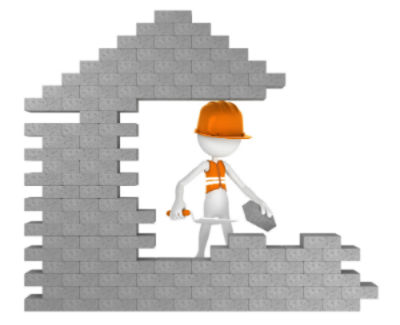Waterproofing Techniques For Buffalo and Western New York
In the business of building houses, the idea of waterproofing had always been part of the whole package. Waterproofing is ensuring that the basement and the foundation of the house are free from cracks and other holes where water could enter or seep through.
Of course, the need for waterproofing is obvious. A waterproofed basement increases the owner’s living space. The unused basement can become another room – a recreation room, a workshop quarter, or an entertainment area.
Benefits
If the basement is your present storage area, waterproofing the place is a must to protect your belongings from water damage. Keeping your basement walls and floor dry and clean eliminates musty odors as well.
The absence of water lowers the amount of moisture in the basement which keeps away potential allergens. Dry air in the basement also makes it more comfortable to be in – not feel sticky in the summer or chilly in the winter.
Damp-proofing
However, in the old days of building houses, builders often mistook damp-proofing with waterproofing. Waterproofing and damp-proofing may be related, but they are totally different in their scoops.
For years, foundations were merely damp-proofed, not waterproofed. As it was, damp-proofed foundations and basements were only able to stop water vapor. It was unable to bridge over the cracks that can develop in the foundation over the years.
With time, water in the ground can develop its own hydrostatic pressure and can push through foundations that are only damp-proofed. After some time, damp-proofing materials may also become brittle and increase the risk of water seepage.
Waterproofing
With the new advances in technology, today’s waterproofing membranes have rubber polymers that allow spanning the cracks in building foundations. Sealed cracks in foundations prevent water from entering the basement.
There are many forms of foundation waterproofing in the market today, with the most common being the polymer-modified asphalt. (This is actually a liquid asphalt coating with added rubber polymers.)
Rubber polymers
The rubber polymers allow the asphalt to stretch over foundation cracks and form a dry, seamless and continuous barrier to water and moisture.
Another advantage of polymer-modified asphalt waterproofing is lower installation cost. Because it is liquid, the material is easily sprayed onto a foundation wall with a high rate of coverage and, consequently, results in lower cost of labor man-hours.
Other options
Of course, keeping foundations and basements dry do not only depend on waterproofing. It should begin from the time the building is constructed all the way up to the finishing touches.
One important aspect of waterproofing is a functioning ground water drainage system. This could be a process where water is drained to daylight or is collected into a sump pit and removed by a sump pump.
This foundation drainage system is to remove ground water that accumulates around a foundation or under the basement floor.
Another important consideration in waterproofing would be the soil grading around the building foundation. Soil grading should slope away from the building, if possible. This is to avoid the risk of water pooling around the building which can get above the waterproofed areas. For more information on this area of waterproofing, check out our Yard Drainage Services page.
For the best possible information and waterproofing service providers for your home, visit our Western New York Counties page, and click on your city or town.
